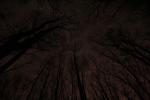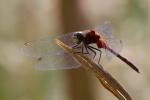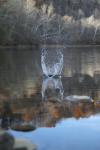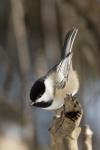trees
Strange Polarized Clouds
ktuli — Mon, 07/12/2010 - 19:26
I can't explain what happened in this photo. I'm sure I did something wrong, but I don't know what it was. Maybe someday I'll learn how to explain it, but for now, it just looks weird.
Technical Data: Canon EOS Digital Rebel XT, Canon EF 35-80mm f/4-5.6 III at 35mm, 1/200 sec at f/10. ISO 400. Circular polarizing filter. No post production. Virgin Run Lake, Fayette County, PA.
We only have one polarizing filter and it only fits a couple lenses that don't get much use, but I made a point of trying it out one Saturday last October. Anya and I had been out looking for nice fall foliage (which as you can see by the photo, we were a bit early for even at this point in October) and stopped by Virgin Run Lake.
A polarizing filter works by reducing light of a specific wavelength - for all functional purposes, this means reflections. Since most reflections from the same source will have the same wavelength, the filter is able to reduce it enough to make it appear to remove it. You may notice that the sky is much bluer (not in this photo) in photos with a polarizing filter, this is because the filter is working on reflections from water particles in the air, thus producing the bluer color.
However, in this photo, I must have had the filter turned the wrong way (circular polarizers work by rotating to filter the wavelength of light you prefer), which resulted in a very flat sky and fake looking clouds.
What do you think?
- Bill
Black & White & Bronze
ktuli — Fri, 07/02/2010 - 21:30
I've been waiting to post this photo for some time now, and actually, I've had this reason for a while but have just had a couple sets of photos (Kanawha 1, 2, 3, 4, 5, 6, 7, 8, 9 and Cozumel 1, 2, 3, 4, 5, 6) that I wanted to post all in a row.
Over a month ago, the Photographic Section had their year end awards dinner. I actually didn't even attend (being a new member I don't know too many people in the club and wasn't sure of what the dealie was with the dinner)and had completely forgotten that I had two photos that had received honorable mention in the previous in-house competitions and qualified for the 2009-2010 Year End Compeition that is judged by external judges.
This photo received a bronze medal for the Monochrome Projected Digital Image portion of the competition...
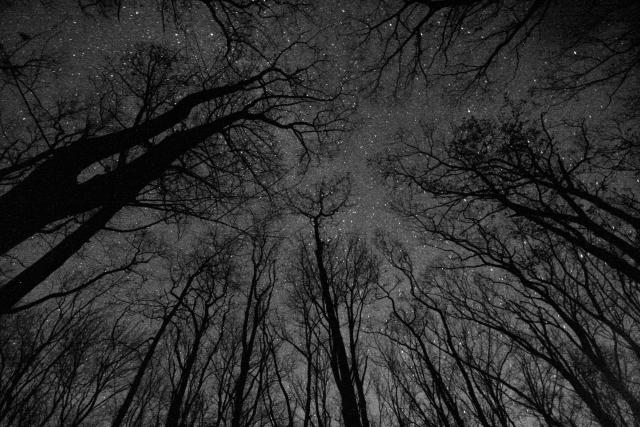
Technical Data: Canon EOS Digital Rebel XT, Sigma 10-20mm f/4-5.6 EX DC HSM AF at 10mm, Unknown manual exposure length as f/5.6, ISO 1600. Converted to B&W and slightly brightened in Photoshop Elements. Laurel Highlands Hiking Trail.
Why This Photo: I took this photo on a hiking trip along the LHHT with some friends. During the trip, I also tried my hand at some light painting, and this was also my first attempt at astrophotography. I really liked the idea of capturing the feeling of looking up at the stars through the trees.
What Works: I liked the shapes of the trees with the starry sky as the background. The curved edges provided by the lens zoomed to 10mm adds a nice additional feel to the size of the trees from that angle.
What Doesn't Work: The thicker tree on the left is a bit distracting, and I wish I could have found a slightly larger opening in the trees for more unbroken star field.
What do you think? The original image is linked to the right. You can see the purplish tinge the sky had from near-by light pollution that I removed in photoshop.
Leave me a comment and let me know if you think this is really a bronze medal winning photo or not.
- Bill
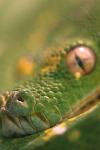
PS: This photo also received an additional honorable mention at the year-end competition, but has already been previously discussed when it got the honorable mention in the in-house judging, so if you're interested click on the photo and read that discussion as well.


